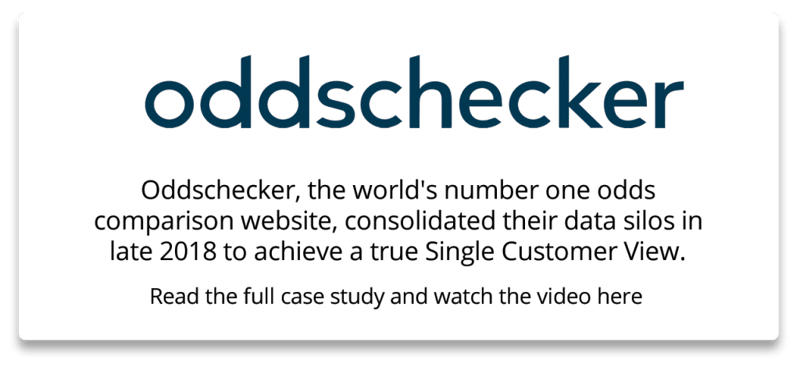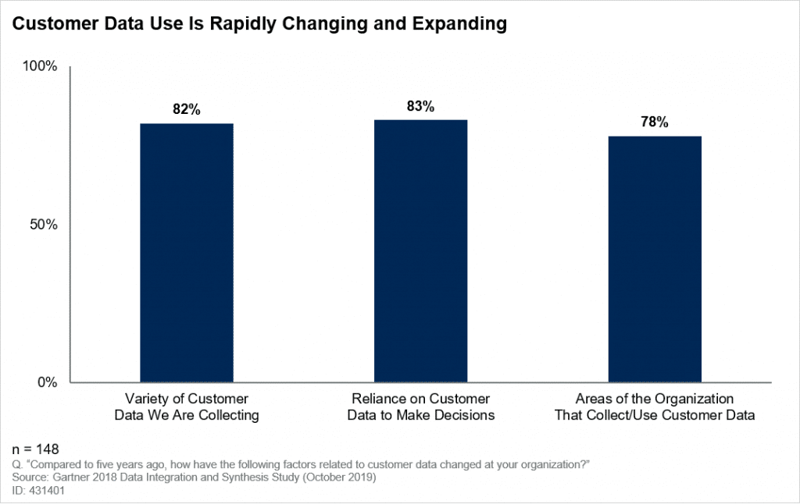What are customer data silos?
A data silo is an unintentionally isolated source of data that is only accessible to a single department. Within the context of large organisations, where there are multiple sources of customer data spread across various engagement channels and systems, it is not uncommon to find silos within departments themselves.
Data silos place a cap on the effectiveness of your customer communications and chew up resources.
The opposite of silos is a unified data repository (or a “single source of truth”), which is the cornerstone of any effective customer engagement and experience strategy.
Why are data silos bad?
Ok, truth to be told, silos themselves aren’t the issue. There may even be very good reasons why they exist and why they were created in the first place. The issue is that they are not connected. This is what leads to inefficiencies and obstacles, as discussed below.

Wasted resources
For us, this is the biggest issue. Isolated data sets mean that someone (or even an entire team in larger companies) needs to manually wade through the different sources, marry them together and hopefully somehow produce an insight for their efforts. This does not produce consistent results at scale.
Additionally, across different departments, there will often be significant duplication of data. In these instances, the organisation is paying for twice as much storage than is necessary. A huge amount of time is also wasted searching for, correcting and corroborating information which could (and should) be readily accessible.
Having the required data accessible from a single place frees up vital resources and reduces costs. It means that team members can concentrate on creative tasks, dreaming up initiatives to enhance customer enhance and drive revenue.
Incomplete and inaccurate customer profiles
When new information about a customer is acquired, or a data point is updated, ideally this would be shared with all relevant teams and reflected across data systems. GDPR and privacy laws accounted for, of course!
Let’s say, for example, a customer makes a repeat purchase through your website. In completing the order, however, they use a new email address. This is useful information for multiple teams within your organisation.
Misguided strategies and initiatives
Strategic decisions based on inaccurate data sets are inherently flawed. Every digital marketing officer wants to be making informed, data-driven decisions. A weak link in the analytics chain is naturally going to have an adverse knock-on effect.
Inability to properly scale CX projects
As your customer experience initiatives grow, so too will the silos. The complexity of the project will eventually become unmanageable to the point of diminishing returns.
Broken funnels
One of the most prized goals for marketing and customer relationship managers is a Single Customer View across their brands’ channels. The SCV, or “360° view”, means that you have full visibility of your customers across all digital touchpoints. It includes both behavioural first-party data and details from the customers’ profiles. Taken together, they empower brands to deliver relevant messages at every stage of the journey.
Ultimately, data silos make achieving a true Single Customer View impossible.

Frustrated customers
In the end, all of this leads to frustrated customers who may abandon their journey entirely and look to competitors.
How does unifying your data silos improve customer engagement?
Data silos negatively impact on every type of customer communication, whether that’s the onboarding of new customers, encouraging repeat sales, service messaging or re-engagement campaigns.
Fundamentally, they limit your ability to run effective multichannel campaigns and at worst, lead to impersonal and irrelevant customer experiences.
When you are able to unify the silos, a whole new range of engagement opportunities opens up, leading to stronger brand loyalty and more chances to connect.
The result? Repeat sales and happier customers.

Better customer experiences
When your marketing, sales and relationship/loyalty teams are all working from the same data group, then tracking a customer’s journey from the first interaction to the last becomes automatic.
And when you have that holistic view of a customer, it makes engagement campaigns easier to coordinate and execute. You can now start to make informed recommendations that add value to your relationship with the customer.
Identify and maximise your profit-centres
Customers who engage with your brand across multiple touchpoints are your most valuable. Naturally, you want to be able to identify these customers and prioritise engagements with them to maximise wallet-share.
Data silos make it difficult, if not impossible, to track customers across different channels and devices.
Additionally, if you have a VIP customer who predominantly engages through a single channel or platform (let’s say through your mobile app) then you will want to provide them with a consistent standard of experience if/when they log-in through an additional channel. If your engagement channels are in sync this can easily be achieved.
More upsell and cross-sell opportunities
If you can identify your VIPs and have the capacity to engage with them intelligently, then your brand is in a better position to upsell new products.
You can leverage data collected throughout the funnel ( e.g purchase history and activity) to offer the customer something they are likely to be interested in. In other words, predictive modelling becomes an everyday part of your strategy.
What causes data silos?
If data silos are so problematic and there are so many obvious benefits to consolidating them, then why do they exist in the first place?
It’s a question that CIOs probably ask themselves on a daily basis! We’ll look at ways to counter the silos at the end of this article, but let’s examine the root causes first.
Single-point solutions
Back in 2017, the average marketing department was using 16 different tech platforms. How many does your team currently rely on?
Throughout every vertical and amongst brands of all sizes, you’ll find separate single-point solutions for each engagement channel. It’s clear why this has happened; until recently there was no alternative! (Note: There is now)
Having one service provider for email, another for SMS, a provider for web and app push notifications (and so on…) means data silos are inevitable.
Incompatible marketing technologies
So why not simply connect the silos then? Unfortunately, there can be compatibility issues. This relates to both how a system prepares and receives data.
When evaluating a service provider’s technology (whether it’s for the purpose of data storage or customer engagement) be aware that unless the software it’s built on is easily integrated with your existing stack, it will quickly become a silo in its own right.
There is a need for open APIs that allow the various technologies to talk to one another, facilitating the instant transfer and actioning of data.
Organisational problems
Unfortunately, in some cases, the heart of the problem lies in company culture. Inter-departmental rivalry can lead to “data-hoarding”, with teams unwilling to lose their sole ownership of information.
In other examples, departments simply may not see the potential benefits of data-sharing. Strong senior leadership is required to overcome both of these hurdles.
How can you fix data silos in your organisation?
Until recently, data integration was exclusively an IT initiative. However, the emergence of Customer Data Platforms and Multichannel Marketing Hubs has given CMOs and CRM Managers a more prominent seat at the data table (please take a moment to enjoy that pun).
Remember, the silos themselves are not the issue. What you want to do is tie them together. This requires two things; internal buy-in and centralisation of sources.
Alignment of departments
It is becoming increasingly important for CMOs and CTOs (and their teams too, of course) to work closely together to build and maximise the effectiveness of the tech stack. First and foremost, there must be alignment on the goals and use cases before progress can be made.
Implement a data repository
A robust customer data platform (commonly referred to as a CDP) will help your brand pull together the various sources into a single location. It acts as a central data repository which is accessible to other customer engagement and experience platforms.
The issue with CDPs by themselves however, is that you still need to find an “actioning” solution that allows you to put your data to work.
While there are a number of dedicated CDPs out there, it is also possible to get a similar performance from a personalisation engine or multichannel and mobile marketing platforms (alongside the additional functionality that they offer as well, of course).
Making it happen
Hopefully this article hasn’t made the task of overcoming your data silos seem too daunting! It is actually very doable. Schedule a demo of the Xtremepush platform today and we’ll talk you through the process of consolidating your data sources in a single platform.













